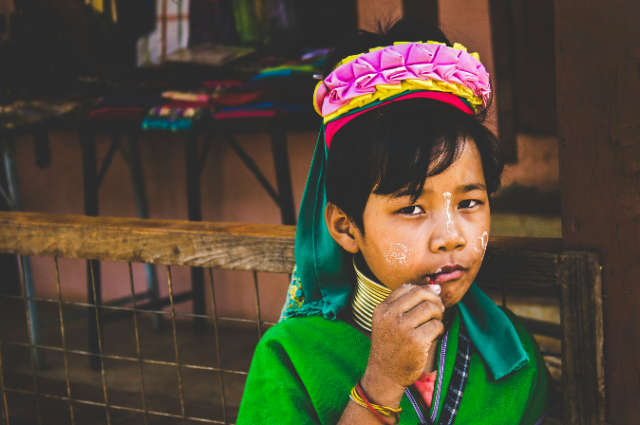
Photo by Quinn Buffing on Unsplash
Introduction
In an era where technology shrinks distances and information flows freely across borders, the preservation of cultural heritage faces unprecedented challenges. Globalization, while fostering economic growth and cultural exchange, often threatens the unique traditions, languages, and customs that define communities. As the world becomes more interconnected, the imperative to safeguard cultural identities becomes increasingly vital. This article explores the complexities of cultural preservation in a globalized world and proposes strategies to maintain the rich tapestry of human heritage.
The Impact of Globalization on Culture
Globalization, characterized by the increasing interconnectedness of economies, societies, and cultures, has led to significant cultural shifts. On one hand, it has facilitated the spread of ideas, art, and traditions, promoting a greater understanding and appreciation of diverse cultures. On the other hand, it has also contributed to cultural homogenization, where dominant cultures overshadow and sometimes replace local traditions. The pervasive influence of Western culture, driven by media, fashion, and consumer products, often leads to the erosion of indigenous practices and languages.
Cultural Homogenization vs. Cultural Hybridization
The debate between cultural homogenization and cultural hybridization is central to understanding the impact of globalization. Cultural homogenization refers to the process where local cultures adopt the traits of more dominant cultures, leading to a loss of diversity. Conversely, cultural hybridization involves the blending of elements from different cultures to create new, unique cultural expressions. While hybridization can enrich cultures, it also poses the risk of diluting original cultural identities.
Case Studies: Endangered Cultures and Successful Preservation Efforts
Several cultures around the world are at risk of disappearing due to globalization. For instance, the Sami people of Northern Europe face threats to their traditional reindeer herding practices due to industrialization and climate change. Similarly, the Maasai in East Africa are struggling to maintain their pastoralist lifestyle in the face of land development and modernization.
However, there are also success stories of cultural preservation. In New Zealand, the Maori have made significant strides in revitalizing their language and customs through educational initiatives and political advocacy. The Hawaiian Renaissance movement has similarly revived traditional Hawaiian practices and language, ensuring that future generations remain connected to their heritage.
Strategies for Cultural Preservation
- Education and Awareness: Educating communities, especially the youth, about their cultural heritage is fundamental. Schools should incorporate local history, languages, and traditions into their curricula. Public awareness campaigns can also highlight the importance of cultural preservation.
- Community Involvement: Engaging local communities in preservation efforts ensures that initiatives are culturally relevant and sustainable. Empowering community leaders and elders to take active roles in these projects can foster a sense of ownership and pride.
- Policy and Legislation: Governments can play a crucial role by enacting laws that protect cultural heritage sites, languages, and practices. Providing financial support for cultural programs and creating platforms for minority cultures to express themselves are essential steps.
- Digital Archiving: Technology can be a powerful ally in cultural preservation. Digitizing cultural artifacts, recording oral histories, and creating online repositories of traditional knowledge can safeguard heritage for future generations. Virtual reality and augmented reality can also offer immersive experiences of endangered cultures.
- Cultural Exchange Programs: Promoting cultural exchange programs allows for the sharing of traditions and customs, fostering mutual respect and understanding. These programs can help dispel stereotypes and promote cultural diversity as a strength rather than a threat.
The Role of International Organizations
International organizations, such as UNESCO, play a pivotal role in cultural preservation. UNESCO’s World Heritage Sites program protects cultural landmarks, while its Intangible Cultural Heritage list recognizes practices, expressions, and skills that are crucial to the cultural identity of communities. Collaborating with local governments and communities, these organizations provide resources and expertise to ensure that cultural heritage is preserved and celebrated globally.
Challenges and Ethical Considerations
Despite the best efforts, cultural preservation faces numerous challenges. Economic pressures often prioritize development over preservation. Additionally, the commercialization of culture, where traditions are commodified for tourism, can lead to the misrepresentation and exploitation of cultural practices.
Ethical considerations also arise when determining what aspects of culture to preserve and how to do so. It is essential to respect the wishes and autonomy of the communities involved, ensuring that preservation efforts do not become paternalistic or intrusive.
Conclusion
Preserving cultural heritage in the age of globalization requires a delicate balance between embracing modernity and honoring tradition. It involves the concerted efforts of governments, communities, international organizations, and individuals. By recognizing the value of cultural diversity and taking proactive steps to protect it, we can ensure that the rich and varied tapestry of human heritage continues to thrive in an increasingly interconnected world. The challenge is significant, but the rewards of preserving our shared cultural legacy are immeasurable.
